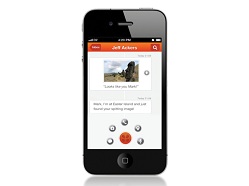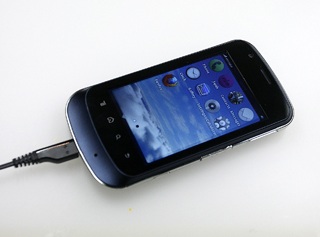Telefónica Digital’s product development and innovation team has worked closely together with
Mozilla, the pioneers of open Web standards, to create a new phone architecture that relies entirely on the Web, enabling HTML 5 applications with absolute access to core phone APIs. This means that all of the device’s capabilities (calling, messaging, browsing, games etc) can be developed as HTML5 applications and executed via an experience based on the
Firefox Web browser.
Despite the significant gains in performance for Web Technologies on mobile devices, HTML and JavaScript-based applications have had limited access to the device’s underlying capabilities. This platform will lead the evolution of the HTML5 set of standards to add new software APIs that are as broad and functionally rich as their native counterparts.
Mozilla’s Boot to Gecko Project unlocks the current limitations of Web development for mobile by providing new features and APIs that will demonstrate just how powerful HTML5 can be and that it is possible to run an entire device using this technology. In doing so it is possible to remove much of the middleware and other superfluous software on a device which not only makes the applications run faster, but also brings down the device unit cost.
Because of this initiative’s commitment to openness, this reference implementation will be submitted for standardization to W3C. The objective is that there are no proprietary APIs within the device architecture, making phones developed using it the only truly open devices on the market.
Telefónica and
Mozilla are developing this HTML5 operating system on a hardware platform that is based upon a
Qualcomm chipset. The three companies will be collaborating to deliver a feature rich prototype platform that will enable smartphone capabilities at feature phone entry level pricing.
An operating system based on HTML5 offers significant opportunities for application developers, content owners and service providers, both in terms of enabling new capabilities, as well as making it easier to develop, deploy and maintain their applications.
According to Carlos Domingo, Director of Product Development & Innovation at Telefónica Digital: 'Telefónica's objective is to drive HTML5 adoption across the industry. For the first time the capabilities of HTML5 and the open Web have been fully leveraged to create an entirely new mobile platform. From our experience in Latin America we know that a huge part of the market is not being catered for by current smartphones. With new open Web devices we will be able to offer a smartphone experience at the right price point for these customers.'
'It has long been our mission to deliver advanced Web technologies that eliminate roadblocks for users and developers. We did it first with Firefox, and now we’re doing it again in creating the first Open Web Devices,' said Brendan Eich, CTO,Mozilla. 'By providing the missing links, Mozilla is now unlocking the power of the Web as the platform for creating and consuming rich content everywhere.'
Arno Gourdol, Senior Director, Web Platform & Authoring at
Adobe, which supports the project, said, 'Adobe is pleased to see Telefonica and Mozilla launch this new initiative.We continue to invest in HTML5 products and technologies and support standards bodies like the W3C. The Open Web Devices APIs can be supported as extensions to PhoneGap, enabling developers to create rich HTML5 apps that work across these new Open Web Devices and all of the platforms supported by PhoneGap, including Android, BlackBerry, iOS and Windows Phone.'
Telefónica R + D started working on the
OWD concept at the start of 2011, and developed an initial prototype for negotiations with potential partners. When
Mozilla announced the 'Boot to Gecko' project to create the open Web platform, based on its popular Firefox browser, in July 2011, both companies embarked on a collaboration that resulted this week in the platform being unveiled.









